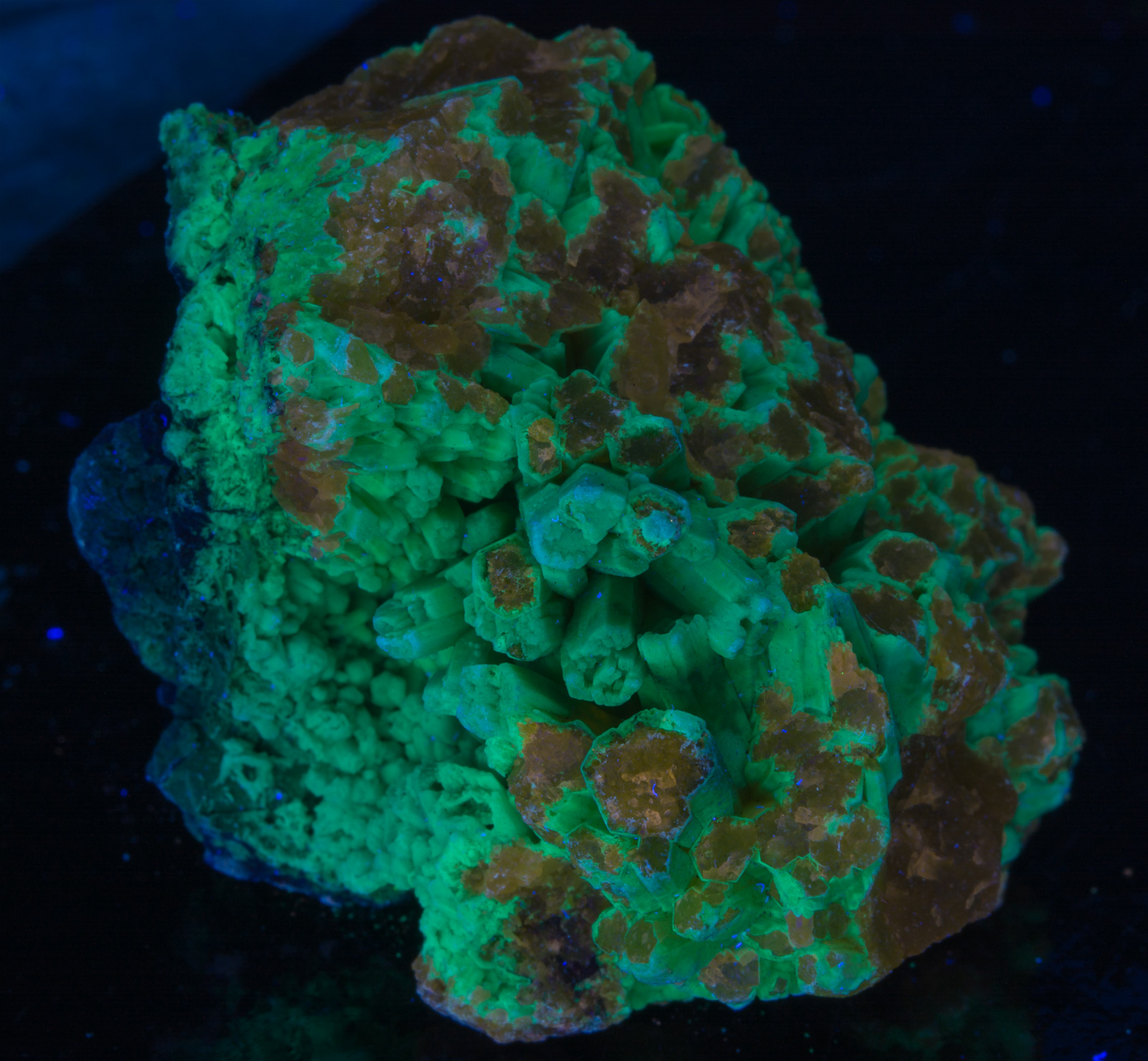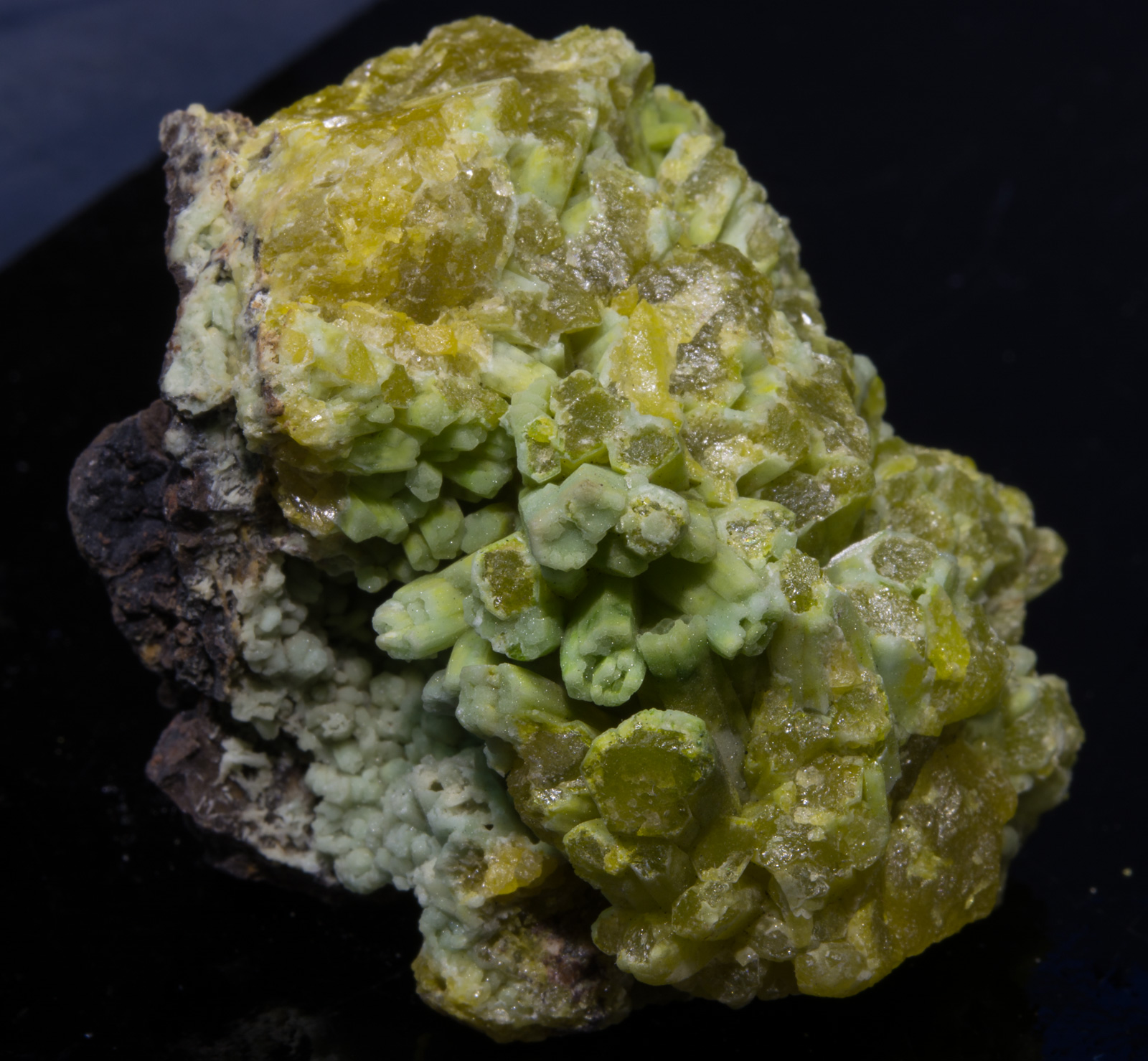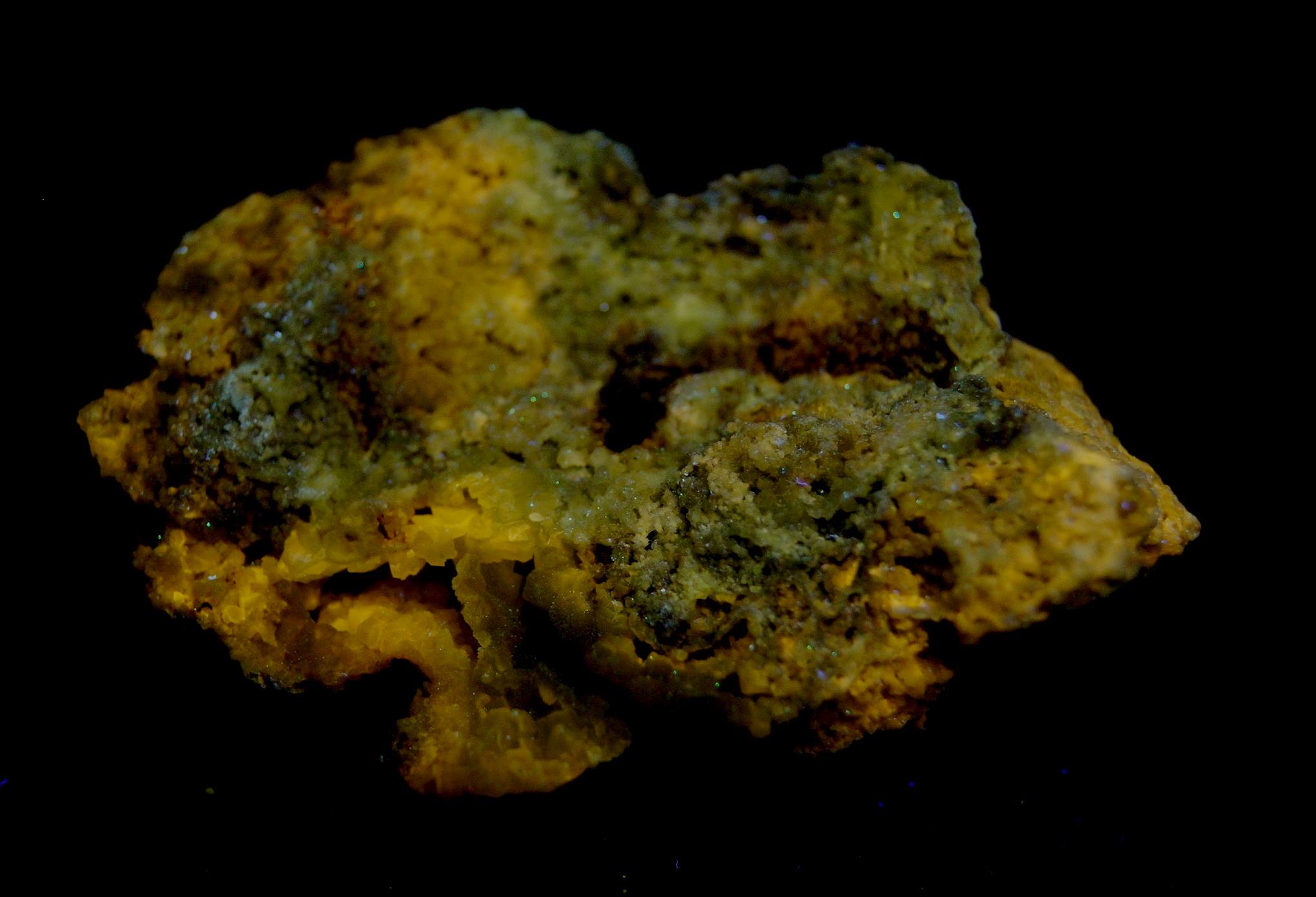There’s been some cornfusion about the fluorescence of pyromorphite lately in the Fluorescent Minerals Facebook Group. I’ll try and summarize, but invite others to wikify. For our purposes the nicest pyromorphite comes from the Bunker Hill Mine, Kellogg, Idaho, from Cumbria in central England, and from Daoping Mine, Gongcheng Co., Guilin Prefecture, Guangxi Zhuang Autonomous Region, China, from Bad Ems, Nassau Germany, from Broken Hill, NSW, Oz, and from the Wheatley Mine in Phoenixville, PA. From a luminescence point of view, we certainly expect action, as pyromorphite is a member of the Apatite Supergroup of minerals, Pb5(PO4)3Cl. And in fact this has been well-known for quite a while. Among other REE activators, there’s a prominent narrow band of emission at 613nm with SW excitation ascribed to Eu3+.
Regarding luminescence under MW, this isn’t new either. Here’s a paragraph from UV Waves, vol 39, #6. 2009 by Jeffrey Shallit; “PYROMORPHITE: This mineral is not usually thought of as a spectacular fluorescent, and it usually isn’t– under shortwave that is. Under midwave, however, many pyromorphite specimens fluoresce a yellow to orange color that can be very bright indeed. A light brown pyromorphite from the classic location of Bad Ems, Germany, fluoresces bright yellow under midwave and not at all under shortwave or longwave.
Some pyromorphite from the Society Girl Mine, Moyie, British Columbia, Canada fluoresces a bright orange under midwave, with a notably lesser response under shortwave. Lately there has been an enormous amount of green pyromorphite from the DaoPing Mine, Guangxi Autonomous Region, southern China at shows. Some of this material fluoresces bright yellow in midwave. I have examined many flats of this material at Tucson and other shows, and only a small percentage exhibits the really bright fluorescence, so bring your light and be prepared to look at many specimens. Roughly speaking, it seems to be the lighter colored material that fluoresces better.”
I’ll try and unearth (un-basement) some pyromorphite from UK and Oz later. We’ve all posted examples recently with alteration to plumbogummite from China. As I recall, my specimens from ID and PA aren’t worth searching for.














